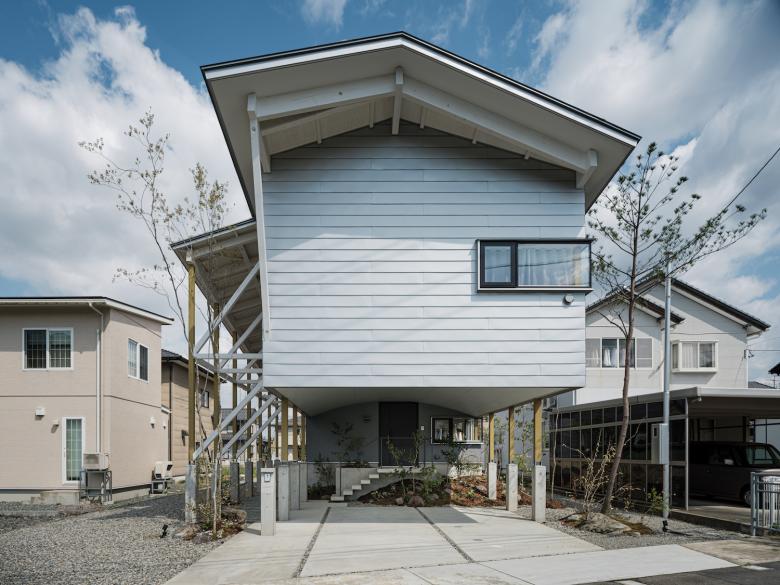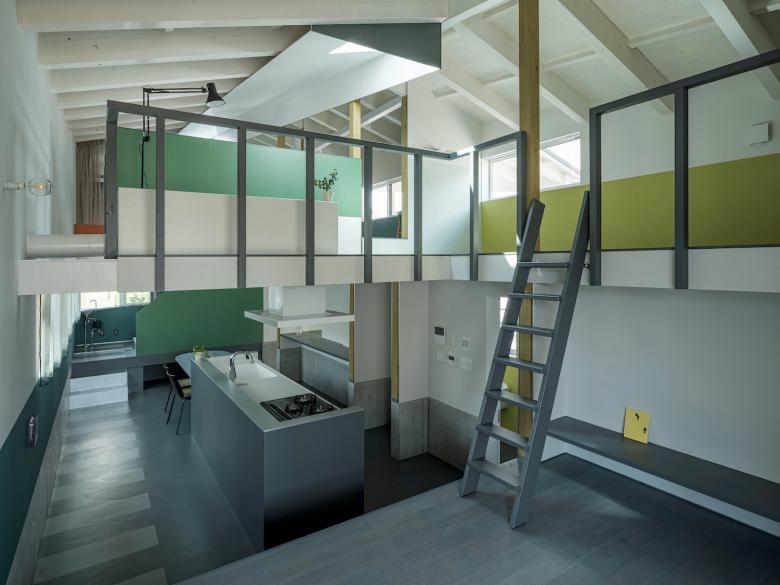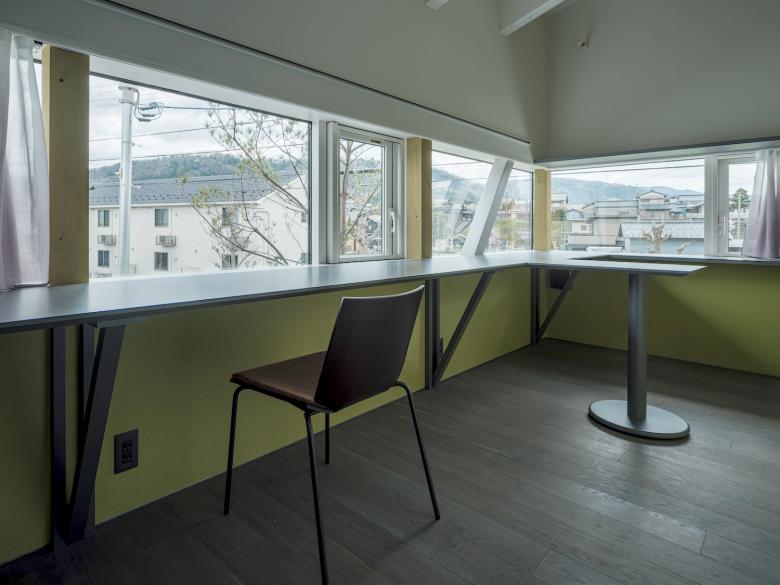Silver Water Cabin
Eureka
10. août 2020
Photo: hideki ookura
This house, located in a part of a Japan with a lot snowfall, was designed to be resilient outside and amenable to daily life inside. The architects at Eureka answered a few questions about the recently completed Silver Water Cabin.
Principal Use: House
Location: Yoshida-gun, Fukui Prefecture, Japan
Client: Individual
Architectural Design: Eureka
- Chief Architects: Junya Inagaki+Satoshi Sano+Takuo Nagai+Eisuke Hori
- Project Team: Yuto Takemi, Akifumi Hara, Naeko Mamiya
Building Area: 133.29㎡
Total Floor Area: 156.79㎡
Main Construction: Wooden
Number of Floors: 2 stories
Construction: Mizukami Construction Co.,Ltd.
Structural Design: Eureka
Equipment: Eureka
Landscape Design: Toshiya Ogino Landscape Design
Fabric Design: Onder de Linde
The property sits very close to the Kuzuryu River, a major waterway running east-west through the Fukui Plain. (Photo: hideki ookura)
Please give us an overview of the project.In the midst of humanity's current climate crisis, we feel it is important to explore ways of life that are deeply rooted in the local climate. This residence located in a cold region with heavy snow was designed to suit the busy lifestyle of a family with young children and one parent who works in the medical field. The lot sits in the Fukui Plain, which suffered urban flooding of its rivers in 2004, and is in a designated flood zone extremely close to the Kuzuryu River. Fukui Prefecture also experienced record-breaking heavy rain two years ago. Because the client needs to commute to the hospital during emergencies, they chose the property based on snow removal from surrounding roads in winter. In line with the client's personality, we focused on ensuring the residence is resilient in the face of public health and climate threats.
Mountains rise to the east of the property. (Photo: hideki ookura)
What was most important for you during the design process?The disasters we face today reveal the inability of humans to successfully manipulate their environment, and they suggest new ways of seeing nature and society. In the past, the Kuzuryu River created fluvial terraces, and villages were located on the tops of these terraces. More recently, the farm fields along the riverbanks have been developed as residential neighborhoods. In this context, children play and learn and grow, families live long and healthy lives, and communities prepare for disaster. Houses are designed within the interwoven timespans of these various events and activities.
Site Plan (Drawing: Eureka)
What challenges did you face in the project? How did you respond to them?To avoid damage from floodwater or snow, our first step was to raise the foundation 1.2 meters above ground level. Mounded earth around the building keeps snow away from the building, and this undulating landscape is planted with native trees and edible plants. A fulfilling daily life thus coexists with an environment designed to be resilient during disasters. Inside, a gable roof covers a single interconnected space with varying floor levels. A diffuser connects the two skylights, distributing natural light through the interior despite the relatively small number of windows. The exterior columns, landscaping, and nearby vegetation provide keynote colors for the indoor space, bringing color to the residents' lives in winter and directing their thoughts to the outside world and nature.
Interview conducted by Neoplus Sixten Inc.





















